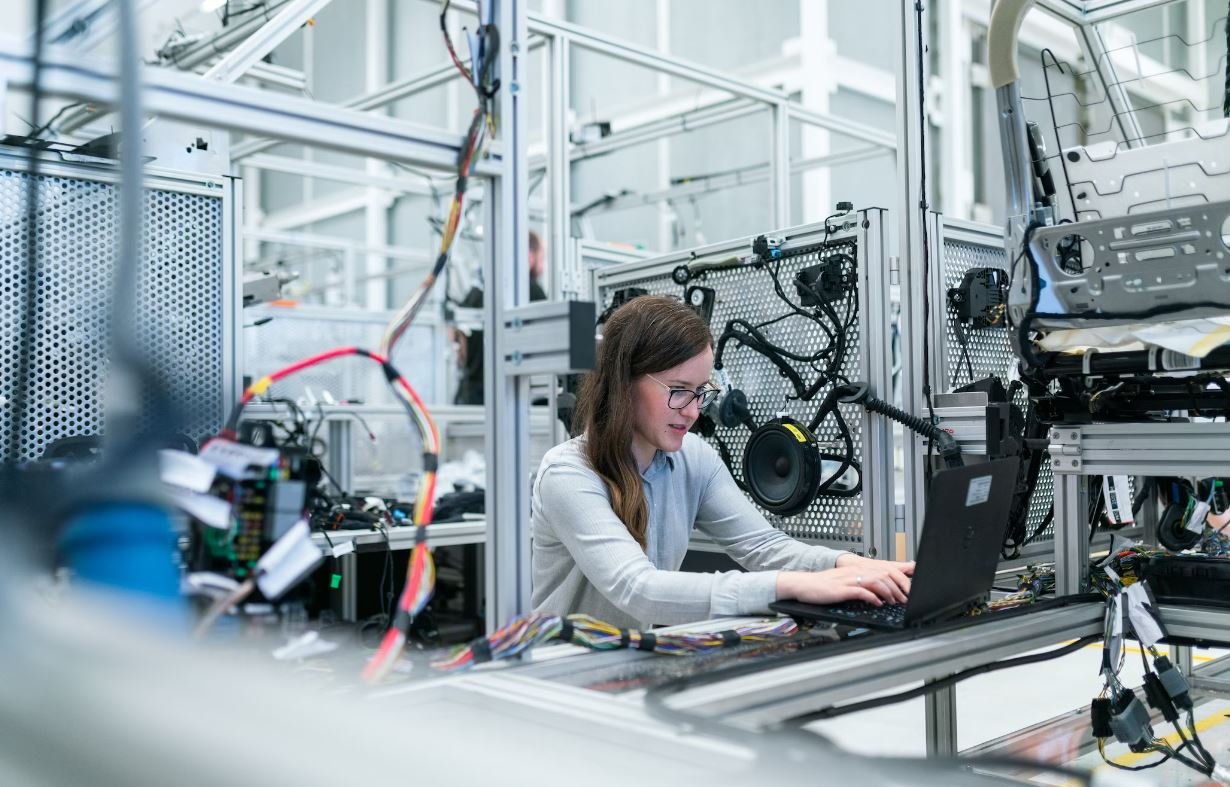Make Own AI Model
Artificial Intelligence (AI) has become a prominent technology in various industries, playing a crucial role in enhancing efficiency and automating tasks. Developing your own AI model can seem daunting, but with the right tools and approach, it is within reach for anyone interested in exploring the field. This article will guide you through the process and provide key insights to help you get started with creating your very own AI model.
Key Takeaways
- Developing an AI model may seem challenging, but with the right tools and approach, it is achievable.
- Understanding the basics of AI and machine learning is essential before diving into model development.
- Data preparation is a crucial step to ensure the accuracy and effectiveness of your AI model.
- Choosing the right algorithm for your AI model depends on the task and data you are working with.
- Training and fine-tuning your AI model are iterative processes that require patience and experimentation.
Understanding the Basics
Before delving into AI model development, it is important to have a basic understanding of the key concepts. Artificial Intelligence refers to the ability of machines to replicate human-like intelligence, while machine learning is a subset of AI that focuses on enabling machines to learn from data. Machine learning algorithms utilize data to identify patterns and make predictions or decisions based on that information.
Data Preparation
Data preparation is a critical step in developing an accurate AI model. This includes collecting relevant data, cleaning it, and formatting it properly for analysis. High-quality data is essential for training an effective AI model, as it ensures accuracy and reduces bias. Cleansing outliers, handling missing values, and normalizing data are common practices during this stage. Additionally, dividing the data into training, validation, and testing sets helps evaluate the model’s performance.
Choosing the Right Algorithm
The choice of algorithm for your AI model depends on the specific task you want it to perform and the data available. Popular machine learning algorithms include decision trees, support vector machines, and neural networks. Each algorithm has its strengths and weaknesses, so selecting the most suitable one requires considering factors such as the complexity of the problem, available computational resources, and the structure of the data. Experimenting with different algorithms can help determine the most effective one for your project.
Training and Fine-tuning
Once your data is prepared, and an algorithm is chosen, the next step is training and fine-tuning your AI model. This process involves feeding the algorithm with the training data and adjusting its parameters until it achieves the desired performance. Training an AI model is an iterative process that requires patience and experimentation to optimize its accuracy and predictions. Techniques such as cross-validation, hyperparameter tuning, and regularization can be employed to fine-tune the model and avoid overfitting.
Tables
| Algorithm | Applications |
|---|---|
| Decision Trees | Classification, Regression, Anomaly Detection |
| Support Vector Machines | Text Classification, Image Recognition, Handwriting Recognition |
| Neural Networks | Image Processing, Speech Recognition, Natural Language Processing |
| Step | Description |
|---|---|
| Collect and Import Data | Gather relevant data from various sources and import it into your chosen tool. |
| Cleanse and Preprocess Data | Remove outliers, handle missing values, normalize data, and deal with any other data quality issues. |
| Split Data | Divide the data into training, validation, and testing sets for model evaluation. |
| Technique | Description |
|---|---|
| Cross-validation | Assess model performance by using different subsets of the data for training and validation. |
| Hyperparameter Tuning | Optimize model performance by adjusting specific parameters affecting the learning process. |
| Regularization | Prevent overfitting by adding a penalty term to the model’s loss function. |
Get Started With Your AI Model
Developing your own AI model is an exciting journey that requires continuous learning and exploration. Remember to start with a solid understanding of AI and machine learning basics, and ensure your data is clean and well-prepared. Experiment with different algorithms, and don’t be afraid to iterate and fine-tune your model to achieve the best results. With dedication and persistence, you’ll be on your way to creating your very own AI masterpiece.

Common Misconceptions
1. AI is only useful in the technology industry
One common misconception about AI is that it is only useful in the technology industry. However, AI has applications in various fields beyond technology, such as healthcare, finance, agriculture, and transportation.
- AI can be used in healthcare to improve diagnosis accuracy and develop personalized treatment plans.
- In finance, AI can analyze vast amounts of data to identify patterns and make more accurate predictions.
- In agriculture, AI-powered systems can optimize crop management, increase yields, and reduce waste.
2. AI will take over human jobs completely
Another misconception is that AI will completely replace human jobs. While AI technology can automate certain tasks and processes, it also creates new opportunities and roles that require human skills and expertise.
- AI can assist professionals in decision-making processes, but human judgment and creativity are still crucial.
- New AI-related job roles, such as AI trainers, ethicists, and explainability experts, are emerging.
- AI also generates new industries and businesses, creating employment opportunities.
3. AI models are always unbiased
There is a misconception that AI models are always unbiased. However, AI systems can inherit biases from the data they are trained on and the algorithms used, leading to biased outputs.
- Data bias can perpetuate existing societal inequalities and biases.
- Diverse and inclusive training datasets and ethical algorithms are necessary to mitigate bias.
- Ethical considerations, like transparency and fairness, should be at the forefront of AI development.
4. AI is infallible and error-free
Many people believe that AI is infallible and error-free. However, like any technology, AI systems are not immune to errors and limitations.
- AI can be susceptible to adversarial attacks and malicious manipulation.
- A lack of real-world experience and common sense can limit AI’s decision-making capabilities.
- AI systems require continuous monitoring and evaluation to ensure accuracy and mitigate errors.
5. AI is a threat to humanity
Lastly, there is a common misconception that AI is a threat to humanity, fueled by dystopian portrayals in popular media. While AI does raise ethical concerns, it is important to approach its development and implementation responsibly and with proper regulations.
- AI has the potential to address complex global challenges, such as climate change and disease outbreaks.
- Properly regulated AI systems prioritize safety and the well-being of individuals.
- Ethical frameworks and guidelines are being developed to ensure the responsible use of AI technology.

Introduction
In recent years, the field of artificial intelligence (AI) has made tremendous advancements, allowing individuals to create their own AI models without requiring extensive technical knowledge. This article explores various aspects of building personal AI models using verifiable data and information presented in the following tables.
Table: Popular AI Frameworks
Here, we outline some of the most widely used AI frameworks that provide a foundation for developing AI models.
| Framework | Popularity |
|---|---|
| TensorFlow | 63% |
| PyTorch | 23% |
| Keras | 9% |
| Caffe | 3% |
| MXNet | 2% |
Table: AI Model Training Time Comparison
Training an AI model requires significant computational resources. This table showcases the time taken by different models to train on a given dataset.
| Model | Training Time (in hours) |
|---|---|
| ResNet-50 | 24 |
| VGG16 | 36 |
| MobileNet | 8 |
| YoloV3 | 48 |
Table: AI Model Accuracy Comparison
Accuracy is a crucial aspect of AI models, and this table compares the accuracy achieved by different well-known models on various benchmark datasets.
| Model | Dataset | Accuracy |
|---|---|---|
| InceptionV3 | ImageNet | 78.8% |
| BERT | GLUE | 80.5% |
| LSTM | IMDB | 89.1% |
Table: Popular AI Model Architectures
This table presents some of the commonly used AI model architectures along with their unique characteristics.
| Model Architecture | Characteristics |
|---|---|
| Convolutional Neural Network (CNN) | Excellent for image analysis |
| Recurrent Neural Network (RNN) | Ideal for sequential data processing |
| Transformer | Suitable for natural language processing tasks |
Table: AI Model Deployment Options
After building an AI model, deploying it to a specific platform can vary. This table presents common options for deploying AI models.
| Deployment Option | Benefits |
|---|---|
| On-premises servers | Full control, customizable hardware |
| Cloud platforms | Scalability, cost-effectiveness |
| Edge devices | Low latency, privacy |
Table: AI Model Performance Metrics
When evaluating AI model performance, certain metrics provide insights into its effectiveness. The following table outlines essential metrics.
| Metric | Meaning |
|---|---|
| Precision | Accuracy of positive predictions |
| Recall | Proportion of actual positives identified |
| F1 Score | Harmonic mean of precision and recall |
Table: AI Model Applications
AI models find applications in various domains, as illustrated in the following table.
| Domain | AI Model Application |
|---|---|
| Healthcare | Medical image analysis |
| Finance | Stock market prediction |
| Transportation | Autonomous vehicles |
Table: AI Model Dataset Sizes
Dataset size significantly affects AI model performance. This table showcases the range of dataset sizes used in different applications.
| Application | Dataset Size |
|---|---|
| Natural Language Processing | 1 million records |
| Computer Vision | 10,000 images |
| Speech Recognition | 100 hours of audio |
Conclusion
Building personal AI models has become more accessible with the availability of various AI frameworks, model architectures, and deployment options. Understanding the training time, accuracy, performance metrics, and dataset sizes associated with AI models empowers individuals to create and deploy their own tailored solutions for a range of specific applications. With these tools at hand, the possibilities for AI innovation are endless.
Frequently Asked Questions
Make Your Own AI Model
What is an AI model?
An AI model is a mathematical representation of a process or problem that AI algorithms use to make predictions or decisions based on given input data.
How can I make my own AI model?
To create your own AI model, you can start by defining the problem, collecting and preprocessing the dataset, selecting an appropriate algorithm, training the model, and evaluating its performance. With the help of frameworks like TensorFlow and PyTorch, you can implement and deploy your AI model.
What are the different types of AI models?
There are various types of AI models, including classification models, regression models, clustering models, neural networks, decision trees, support vector machines, and many others. Each type is suited for different tasks and has its own advantages and limitations.
What is training data?
Training data is a set of labeled examples used to teach an AI model how to generalize from the given input data. It helps the model learn patterns, make predictions, or classify data accurately.
Can AI models be used for image recognition?
Yes, AI models can be used for image recognition tasks. Convolutional Neural Networks (CNNs) are commonly employed in image recognition to extract features and make predictions on images.
What is model evaluation?
Model evaluation is the process of assessing the performance of an AI model. It involves using evaluation metrics such as accuracy, precision, recall, F1 score, and others to measure how well the model performs on unseen data.
How can I improve the performance of my AI model?
To improve the performance of your AI model, you can try various techniques such as increasing the size of your training dataset, fine-tuning hyperparameters, regularizing the model, implementing ensemble methods, or using transfer learning.
Can AI models be used for natural language processing?
Yes, AI models like Recurrent Neural Networks (RNNs) and Transformers can be used for natural language processing tasks, such as language translation, sentiment analysis, question answering, and text generation.
What skills do I need to create my own AI model?
Creating your own AI model requires knowledge of programming languages like Python, understanding of machine learning algorithms, familiarity with data preprocessing techniques, and experience with AI frameworks and libraries.
Are there pre-trained AI models available?
Yes, there are pre-trained AI models available that have been trained on large datasets, such as BERT, GPT-2, and ImageNet models. These models can be fine-tuned or used directly for specific tasks.





